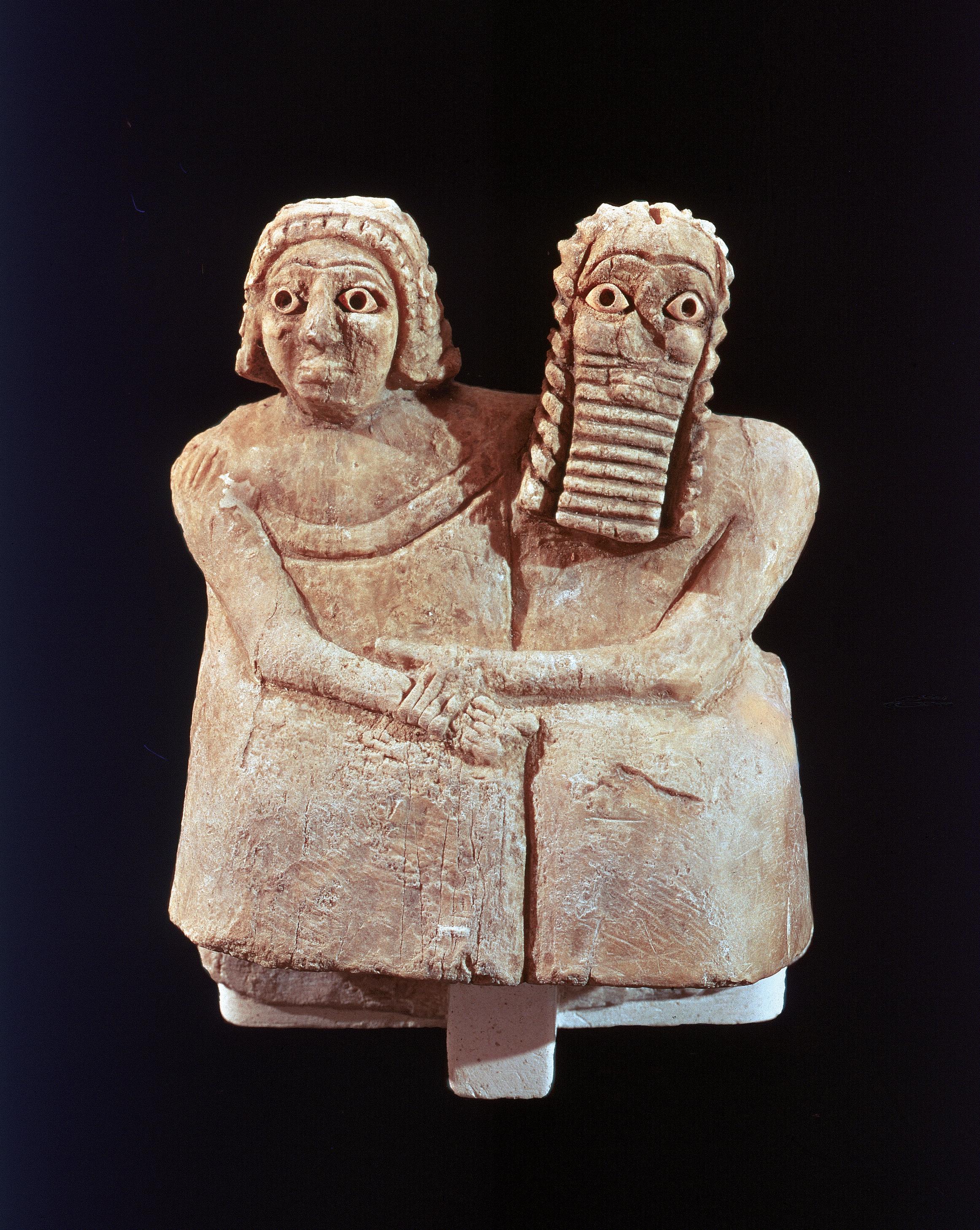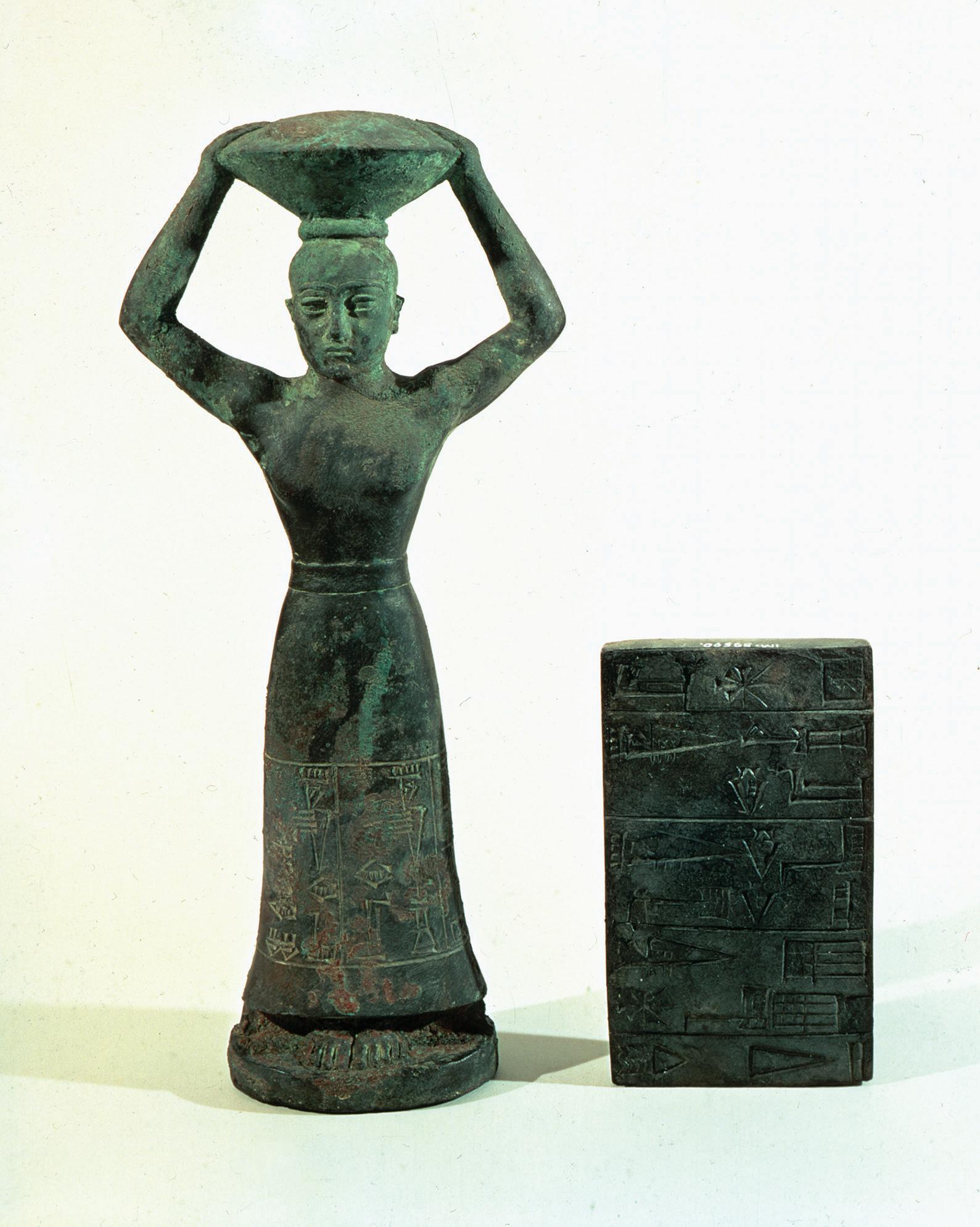Cave Painting of Animals








Archaeologist’s notes: This small statue of a married couple was found in the rubble of a religious shrine. The original statue had eyes made of shells and semiprecious stones. It may have been left at the shrine as a gift to the gods.

Archaeologist’s notes: The clay seal on the right shows men guiding an ox along as it pulls a plow to plant seeds. The cylinder seal (left) was rolled across a slab of clay to create this scene.

Archaeologist’s notes: This impression was made from a cylinder seal. It shows King Ur-Nammu (seated) appointing Hashhamer as one of his governors. The cuneiform inscription on the seal says, “Ur-Nammu, the mighty hero, king of Ur; Hashhamer, the governor of Ishkun-Sin, his servant.”

Archaeologist’s notes: This small copper statue shows a Sumerian chariot pulled by four donkeys. This kind of chariot may have been used by a Sumerian soldier.

Archaeologist’s notes: This gold cup, created by Sumerian artisans, may have been used at banquets. Banquets were generally held for the members of the upper classes of Sumerian society.

Archaeologist’s notes: This bronze statue shows King Ur-Nammu carrying a basket of bricks on his head. This is most likely a symbol for one of the king’s main responsibilities—to build and maintain the temples. In reality, the king would not have done the actual work himself. The inscription around the body of the statue records the restoration of the temple of Inana, the patron god of Uruk.

Archaeologist’s notes: This lyre—a stringed musical instrument—was decorated with gold and semiprecious stones. It was found in the tomb of a Sumerian queen. Royal musicians may have played this instrument to entertain the queen and her court.
